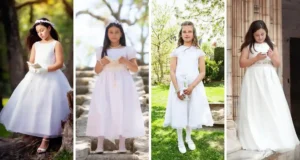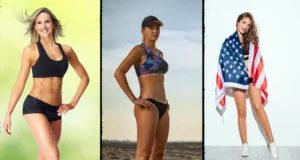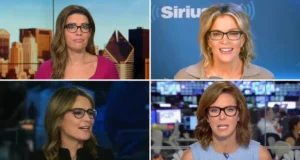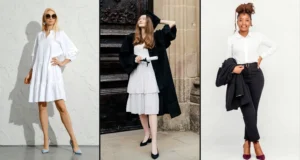Female meteorologists have been a staple on our TV screens for decades, bringing us the latest weather forecasts with precision and accuracy. But have you ever wondered why they always seem to be wearing dresses? It’s a question that has piqued the curiosity of many viewers and for a good reason. From tradition to professionalism and safety concerns, there are several reasons behind this wardrobe choice.
In this article, I’ll delve into the fascinating world of meteorology and explore why female meteorologists always wear dresses, shedding light on a topic shrouded in mystery for too long.
Why do female meteorologists always wear dresses?
Better than wearing jeans or shorts
Traditionally, dresses have been seen as more formal and professional attire compared to jeans or shorts. This perception stems from cultural and societal norms that associate certain types of clothing with certain levels of formality or professionalism.
As a result, wearing a dress can help to convey a more polished and put-together appearance, which is important for individuals in public-facing roles, such as meteorologists.
Less hazardous when working with weather-related equipment
Meteorologists often work outdoors, and their work may involve using equipment such as anemometers or weather balloons, which can easily get tangled up with loose clothing.
Compared to other clothing options such as shorts or pants, dresses are less likely to get caught on objects or blown around by the wind, reducing the risk of accidents while on the job. Therefore, wearing dresses is a practical choice for female meteorologists who work in outdoor environments.
Considered more professional
Dressing in a professional manner helps female meteorologists maintain a professional appearance, which is important when delivering weather forecasts on television.
A professional appearance can help establish credibility and trust with viewers. This is especially important in fields like meteorology, where accuracy is key. Wearing a dress is one way that female meteorologists can meet these professional expectations and present a polished and put-together image to their audience.
Creates a polished and confident look
Some female meteorologists may opt to wear tight-fitting dresses for a few reasons. Firstly, it can create a more polished appearance, which may be seen as more professional.
Secondly, it can convey confidence and power, which can be important in a competitive and male-dominated field.
Finally, some meteorologists may find that tight dresses provide more comfort during long periods of standing and moving compared to looser or more restrictive clothing options.
However, it’s important to note that not all female meteorologists choose to wear tight dresses, and there is no dress code mandating this.
Suggested by a Facebook group to encourage women in STEM fields
A Facebook group of female meteorologists suggested that wearing dresses could help encourage more women to pursue careers in STEM fields, including meteorology.
The idea behind this is that by presenting a professional image and dressing in a feminine way, female meteorologists can help break down gender stereotypes and promote the idea that women can be successful in scientific and technical fields traditionally dominated by men.
Wearing dresses can also serve as a way to challenge societal norms that view women in traditionally masculine clothing as less competent or authoritative. By presenting a professional image while also embracing their femininity, female meteorologists can help inspire young girls and women to pursue careers in STEM.

Must follow wardrobe rules, such as avoiding distracting prints
In addition to the reasons mentioned earlier, there are also wardrobe rules that female meteorologists must follow. These rules often include no distracting prints or patterns on clothing, as it can distract viewers at home.
Meteorologists are also encouraged to wear colors that don’t clash with the green screen background used in weather reports and to avoid wearing anything too revealing or flashy. These guidelines are in place to ensure that the focus remains on the weather and the meteorologist’s expertise rather than their clothing.
Following traditions
“Tradition” refers to the historical and cultural practice of female meteorologists wearing dresses on camera. This tradition likely originated from societal expectations around appropriate attire for women in professional settings, particularly on television.
Over time, this practice has become ingrained in the culture of meteorology and broadcasting and is often seen as a standard or expectation for female meteorologists. While there is no formal dress code mandating the wearing of dresses, the tradition continues to influence the clothing choices of female meteorologists.
Summary
Female meteorologists are often seen wearing dresses while reporting the weather. The reasons for this are varied and include professionalism, safety, comfort, and tradition. Wearing dresses is considered more professional than wearing jeans or shorts, and dresses are less likely to get caught on objects or blown around by the wind when working with weather equipment.
Some female meteorologists may choose to wear tight dresses for a more polished look and for comfort during long periods of standing and moving. Additionally, the dress was suggested by a Facebook group of female meteorologists to encourage more women to pursue careers in STEM fields. Despite the various reasons, the tradition of wearing dresses has persisted in the field of meteorology.
FAQ
What is the weather girl stereotype?
The “weather girl” stereotype is a term that has been characterized as sexist and trivializes women. It refers to adult women as girls, reinforcing the stereotype’s negative attributes. The term is used to describe women who present weather forecasts on television, and it is considered a gender stereotype within the profession.
What is the origin of the weather girl stereotype?
The origin of the “weather girl” stereotype is rooted in the historical caricature of women who broke into the field of broadcast meteorology. The term “weather girl” has been characterized as a sexist term that trivializes women by referring to adult women as girls in a context where male adults are not.
Are weather girls qualified?
To become a weather presenter or meteorologist, a four-year meteorology/atmospheric science degree is almost always required. The degree includes classes based on advanced physics, mathematics, chemistry, and computer programming.
Who was the first female weather girl?
Barbara Edwards was the first female weather presenter on the BBC, starting in January 1974. She joined the Met Office in 1957 and worked as a weather forecaster at Gatwick Airport and Heathrow Airport before moving to the London Weather Centre.
How has the role of female weather presenters evolved over time?
Networks started hiring female weather presenters in the 1950s, long before major networks regularly employed female journalists. However, women in the field have faced gender stereotypes and have been labeled as “weather girls,” which trivializes their profession and reinforces the negative attributes of the stereotype.



